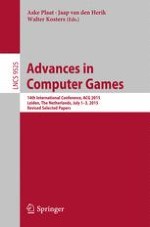2015 | Book
Advances in Computer Games
14th International Conference, ACG 2015, Leiden, The Netherlands, July 1-3, 2015, Revised Selected Papers
Editors: Aske Plaat, Jaap van den Herik, Walter Kosters
Publisher: Springer International Publishing
Book Series : Lecture Notes in Computer Science
